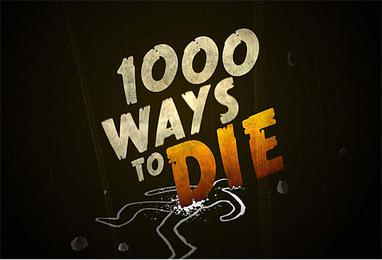When it comes to unconventional television shows, 1000 Ways to Die stands out as a bizarre yet fascinating exploration of mortality. Premiering in 2008, the series gained notoriety for its wild scenarios and morbid humor, making it a cult favorite among fans of the macabre. In this review, I will delve into the show’s premise, memorable episodes, and its cultural impact, providing you with a comprehensive look at why this series remains a topic of discussion years after its conclusion.
The Premise: A Unique Take on Death
1000 Ways to Die is a reality-based anthology series that dramatizes unusual and often humorous deaths. Each episode presents a collection of stories where individuals meet their untimely demise in bizarre ways, often accompanied by graphic illustrations and commentary. The show combines elements of dark comedy with a cautionary tone, serving as a reminder of the fragility of life.
An Interesting Format
The structure of the show is engaging, with each episode typically featuring several distinct stories. The narrations are delivered with a wry sense of humor, which can make even the most gruesome deaths feel oddly entertaining. I found that this approach allows for a unique viewing experience, as I never knew what to expect next.
Memorable Episodes
Throughout its run, 1000 Ways to Die produced numerous episodes that left a lasting impression. Here are a few notable ones that stand out to me:
1. “The Woodchipper”
In this infamous episode, a hapless victim finds himself in a situation involving a woodchipper. The dramatization is both chilling and darkly comedic, showcasing the unexpected dangers that can arise from seemingly innocuous situations. The storytelling in this segment highlights the fine line between humor and horror, making it a fan favorite.
2. “Death by Karaoke”
This episode revolves around a karaoke competition that takes a deadly turn. The absurdity of the situation, combined with the over-the-top dramatization, creates a memorable narrative. It’s a perfect example of how the series can take mundane activities and turn them into outrageous tales of demise.
3. “The Human Fireball”
Another standout episode features a daredevil who attempts a dangerous stunt involving fire. The precarious nature of his actions serves as a cautionary tale about the risks associated with extreme sports. The dramatization is intense, yet the humor remains intact, making it a compelling watch.
Cultural Impact and Reception
Despite its controversial premise, 1000 Ways to Die garnered a dedicated following. The show’s mix of humor and horror resonated with audiences, making it a topic of conversation in pop culture. I remember discussing various episodes with friends, often laughing at the absurdity of the deaths while also contemplating the underlying messages about safety and risk-taking.
Criticism and Controversy
While many viewers enjoyed the series, it was not without its critics. Some argued that the show trivialized death and could desensitize viewers to real-life tragedies. The graphic nature of the reenactments also sparked debate regarding the appropriateness of such content on television. I believe this controversy only added to the show’s allure, as it pushed boundaries and challenged societal norms regarding the depiction of death.
The Show’s Legacy
1000 Ways to Die concluded in 2012, but its legacy endures. The series has paved the way for other shows that explore death in unconventional ways, contributing to a broader conversation about mortality in media. I often find myself reflecting on the series when I encounter other programs that deal with similar themes.
Influence on Other Media
The influence of 1000 Ways to Die can be seen in various forms of entertainment, from podcasts to YouTube channels dedicated to bizarre deaths. Its unique approach to storytelling has inspired creators to explore the darker sides of life with a humorous twist. This evolution of content speaks volumes about the show’s impact on the genre.
Conclusion
In reviewing 1000 Ways to Die, I find it to be a remarkable blend of dark humor and cautionary tales about the fragility of life. Its unique storytelling format, memorable episodes, and cultural impact make it a significant part of television history. For those who appreciate the absurdity of life and death, this series offers an entertaining yet thought-provoking experience.
If you’re looking to explore the bizarre and often humorous side of death, I highly recommend giving 1000 Ways to Die a watch. Just remember, while it’s all in good fun, the stories serve as a reminder to live life to the fullest—because you never know what might happen next.
<iframe width="560" height="315" src="https://www.youtube.com/embed/gmE6MCDB1hc?si=sReEHbVH8jb5Ll5D" title="YouTube video player" frameborder="0" allow="accelerometer; autoplay; clipboard-write; encrypted-media; gyroscope; picture-in-picture; web-share" referrerpolicy="strict-origin-when-cross-origin" allowfullscreen></iframe>




.jpg?w=100&resize=100,70&ssl=1)
